Tom Gauld is an illustrator, cartoonist, and publisher. His finished pieces range from animated advertisements to book illustrations, as well as the weekly comic strips he produces for the Guardian. Whether he’s drawing a campaign for one of the UK’s largest drug stores or illustrating a book of monsters, Tom’s drawing style is intimate and concise, reflective of an artistic process that uses technology without relying on it. As a publisher, he and Simone Lia run Cabanon Press. Tom has released his work through Cabanon with aptly titled collections like First, Second, and Three. The Rumpus harnessed the power of the Internet to talk to Tom across the ocean about art, publishing, the balance between commissions and passion projects, and his upcoming book, Goliath, which will be out next year from Drawn and Quarterly.
***
Rumpus: Your work has a very hand drawn look to it, with a lot of hand lettering and depth defined by hatching. What kind of artistic processes leads to your finished work? How much are digital tools a part of your finished pieces?
Tom: I definitely like giving a hand-made feel to my work. Quite often the images are very simple and graphic, but hopefully the human feeling of the drawing keeps it from being cold or clinical: I want some warmth in there. I do use the computer quite a lot. I use it to lay out and tweak my pencil drawings but then I print them out and trace off an ink version which I draw and crosshatch completely by hand before scanning back into the computer and, if necessary, adding colour in photoshop.
Rumpus: How would you say that exposure to your father’s work as an architect at a young age informs your career as an artist?
Tom: I’m sure it had an effect. At the simplest level I think having paper and pens and someone who liked drawing around helped (he worked from home when I was a boy). Perhaps some of the clarity and precision of plans has influenced me too.
Rumpus: In some of your work, like your strips for the Guardian, the art is much simpler and language plays a greater role in storytelling. What other tools do you use as an artist to tell a story, whether it’s format or content?
Tom: Format, words and pictures all work together to make a good comic. I started at college doing pure illustration and only gradually got into making stories and using words. I’m still more comfortable with pictures than words: I’m happy doodling away on drawings for hours, but putting words together is always more of a struggle. I usually like to keep things as simple as I can so it’s interesting seeing what I can remove and still keep the story: you don’t want to say something in words which is better said in the pictures (and vice versa).
Rumpus: How do you feel about the variety of formats available to artists these days for storytelling? Do you have any favorites between comic books, graphic novels, magazine illustrations, picture books, or illustrations as wall art?
Tom: I really enjoy the simplicity and restrictions of the small cartoons I do every week for the Guardian. I like that there is this space which every week I have to figure out how to use to entertain people. Actually I like making all the types of things you mention above, I like the variety.
Rumpus: Which illustrators or cartoonists do you think have had a great influence on your work?
Tom: I think maybe the biggest influences were the cartoonists I discovered while I was at college: Edward Gorey, Chris Ware, Dan Clowes and Mat Brinkman. It was definitely seeing their publications that made me want to make comics.
Rumpus: How does publishing your own work with Simone Lia as Cabanon Press change what you’re able to work on compared to more traditional artist/publisher relationships?
Tom: Simone and I made our first comic (called ‘First’) about 10 years ago we self-published for two reasons: we didn’t know of any UK publishers who did that sort of thing and we were at college where they had all the facilities, help and encouragement to do it ourselves. Now it seems there are lots of interesting small publishers in the UK.
I’ve always wanted to make publications where the experience begins as soon as you pick up the thing, where the design of the object is part of the story, and self-publishing means you can design it however you want. I like the feeling that if I get the urge I can put together a self-published thing in a few weeks, but I also like working on bigger, longer projects like my graphic novel “Goliath” which will be out next year from Drawn and Quarterly.
Rumpus: How do you find balance between illustration jobs and your own storytelling? Would you rather focus full-time on your own work, or is there something to be gained by maintaining a buffer of other illustration around developing projects?
Tom: I like doing both. I think I’d be a bit lost without ANY illustration work but I wouldn’t like to be doing nothing else. Having said that I’d like to push the balance a bit more towards my own comics and stories.
Rumpus: How does technology factor into your work? Do you find it more of a valuable resource or terrible distraction? Do you see a time when your work will be presented digitally beyond keeping a portfolio online?
Tom: The Internet, and wikipedia in particular, is amazing for the sort of not particularly deep research I often need to do for my work. I love looking around at all the interesting things other people are doing, but that does often lead into idle time-wasting. I like how instant and easy it is to put work out on the Internet, but I still love print comics. I don’t think the intimacy of holding a paper comic in your hand has been replicated digitally, maybe kindles and ipads are taking things in that direction, but I don’t think we’re there yet.
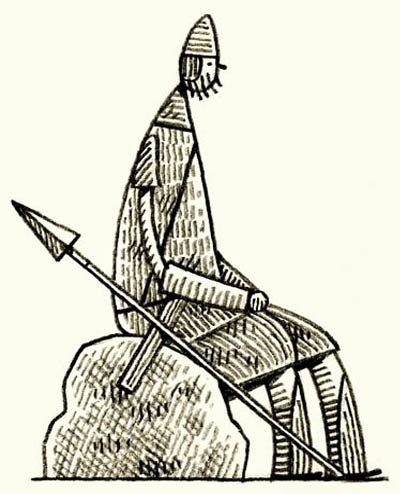

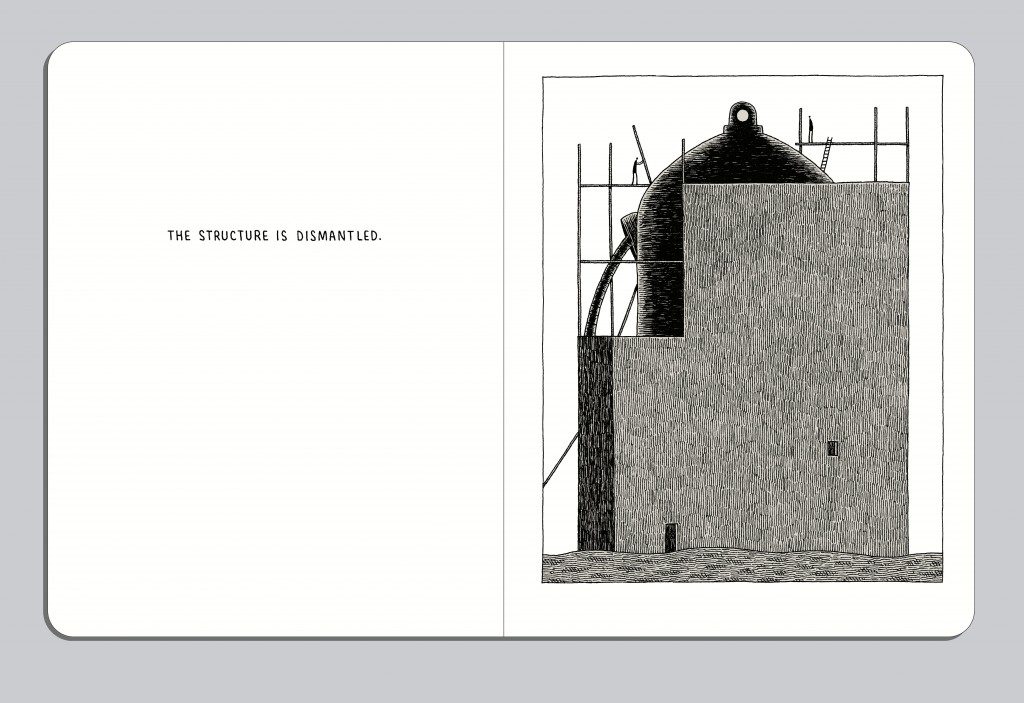
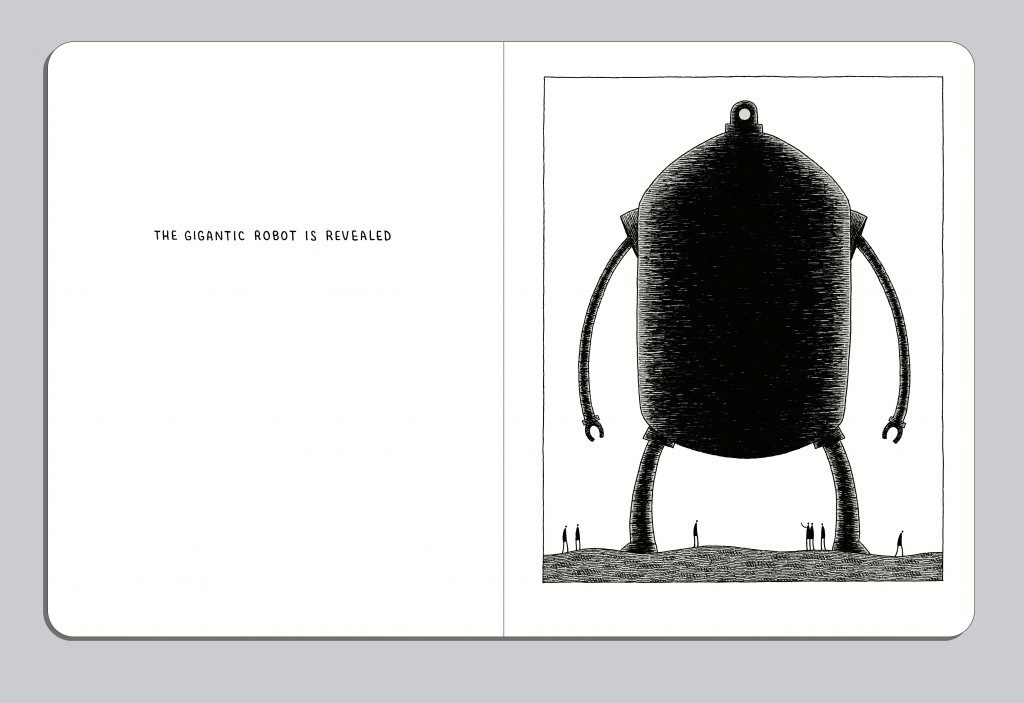
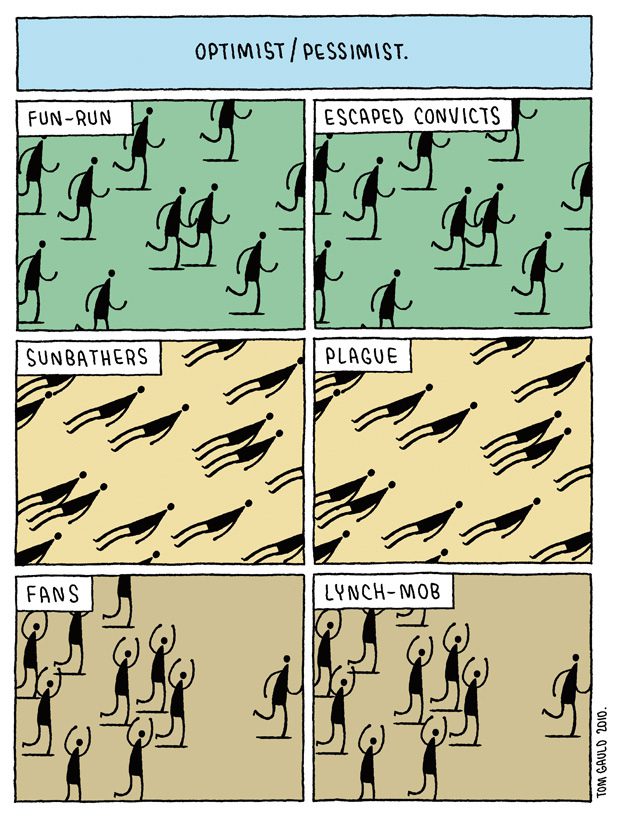

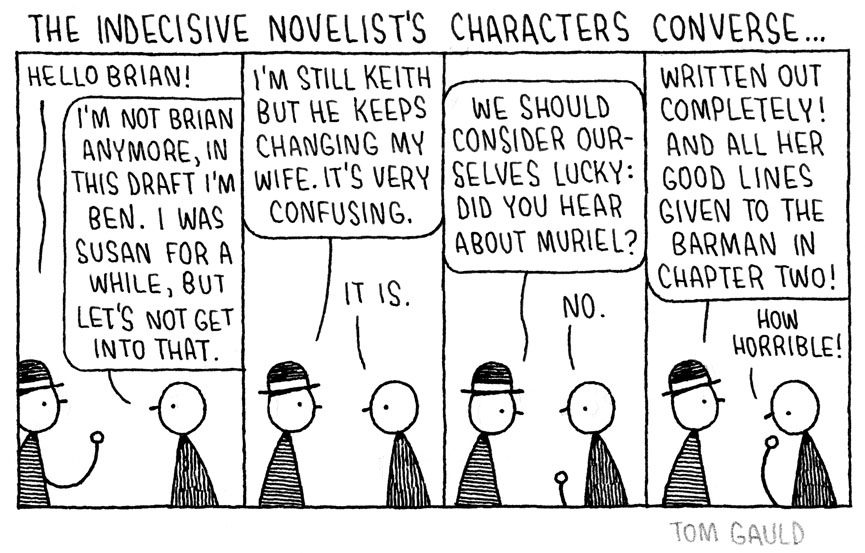
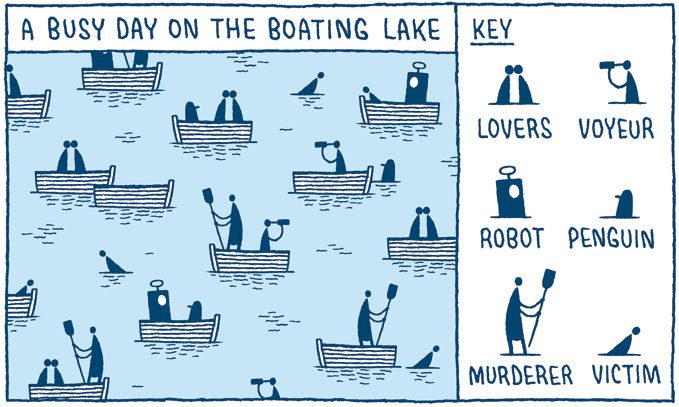
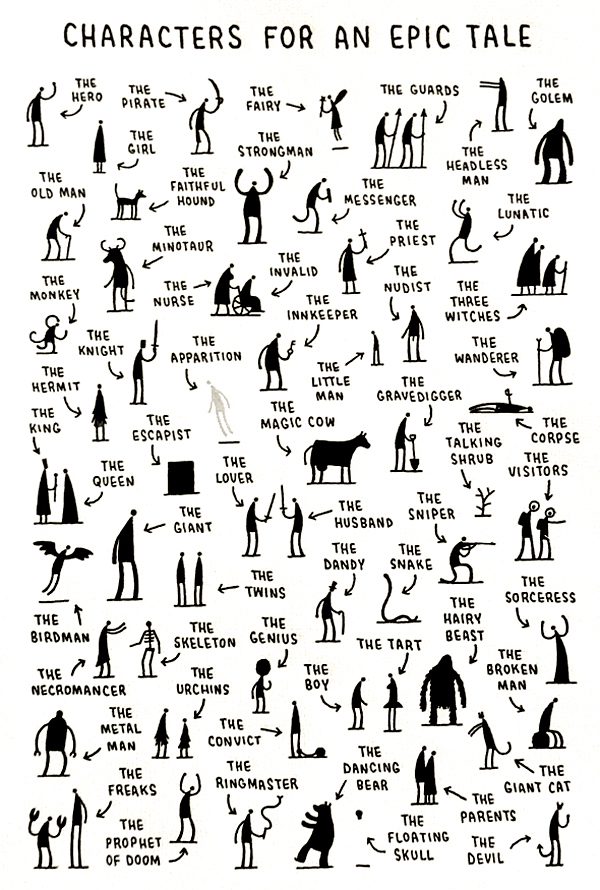






One response
Thank you for this! I love Tom Gauld– have been collecting those little postcard books for awhile.
Click here to subscribe today and leave your comment.